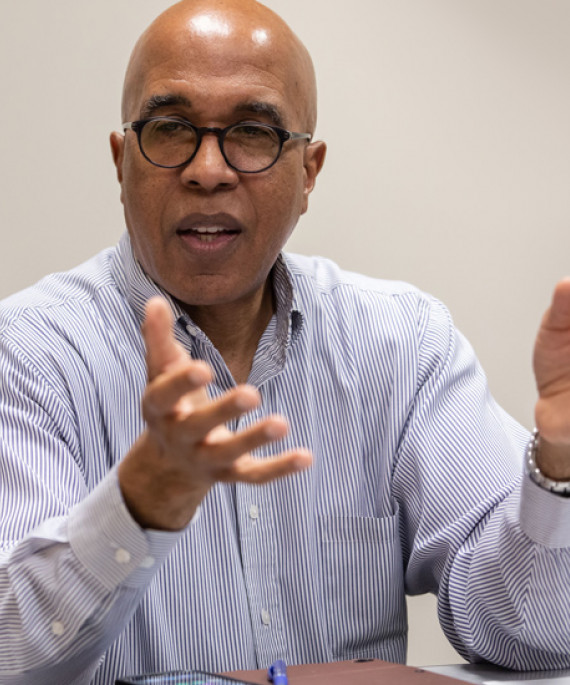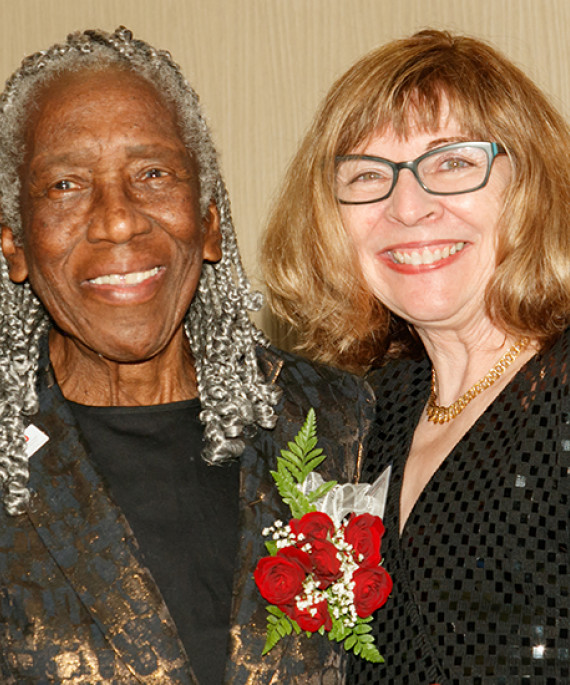
Five Black college leaders lean into one another to get the job done
Noelle Arnold might be the senior associate dean of a large college in a major R-1 institution, but among her most important duties is motivating her college “admini-sisters.”
The chief diversity officer and professor of educational administration is fully aware that the leadership makeup at The Ohio State University’s College of Education and Human Ecology rarely happens. Five Black women in key leadership roles — two department chairs, a chief of staff, chief administrative officer and senior associate dean — are so in sync that they can in a flash read each other’s expressions across the room or in a crowded Zoom meeting.
“I like my job, but they make me like it a lot,” said Arnold, who became senior associate dean in 2019 and collaborated with Dean Don Pope-Davis to recruit new leaders. “I love working with people who have integrity, who are creative, who are innovative, who will push the envelope. We don't have to do (higher education administration) the same way we've been doing it — even knowing that some backlash will come. But they’re like a little force field around you.”
Envelope pushing is something the five women specialize in. Working out details through late-night texts or huddled over conference tables, they have done heavy lifting on major initiatives in the college.
They helped to increase faculty diversity to 34%, transforming the college’s executive leadership in the process. Building on the dean’s groundwork, Arnold implemented a first-of-its-kind diversity postdoctoral program that groomed postdocs of color and culminated with hiring five of them into tenure-track positions. Under new chair Antoinette Miranda, the Department of Teaching and Learning expanded direct admission to increase enrollment of marginalized undergraduate students.
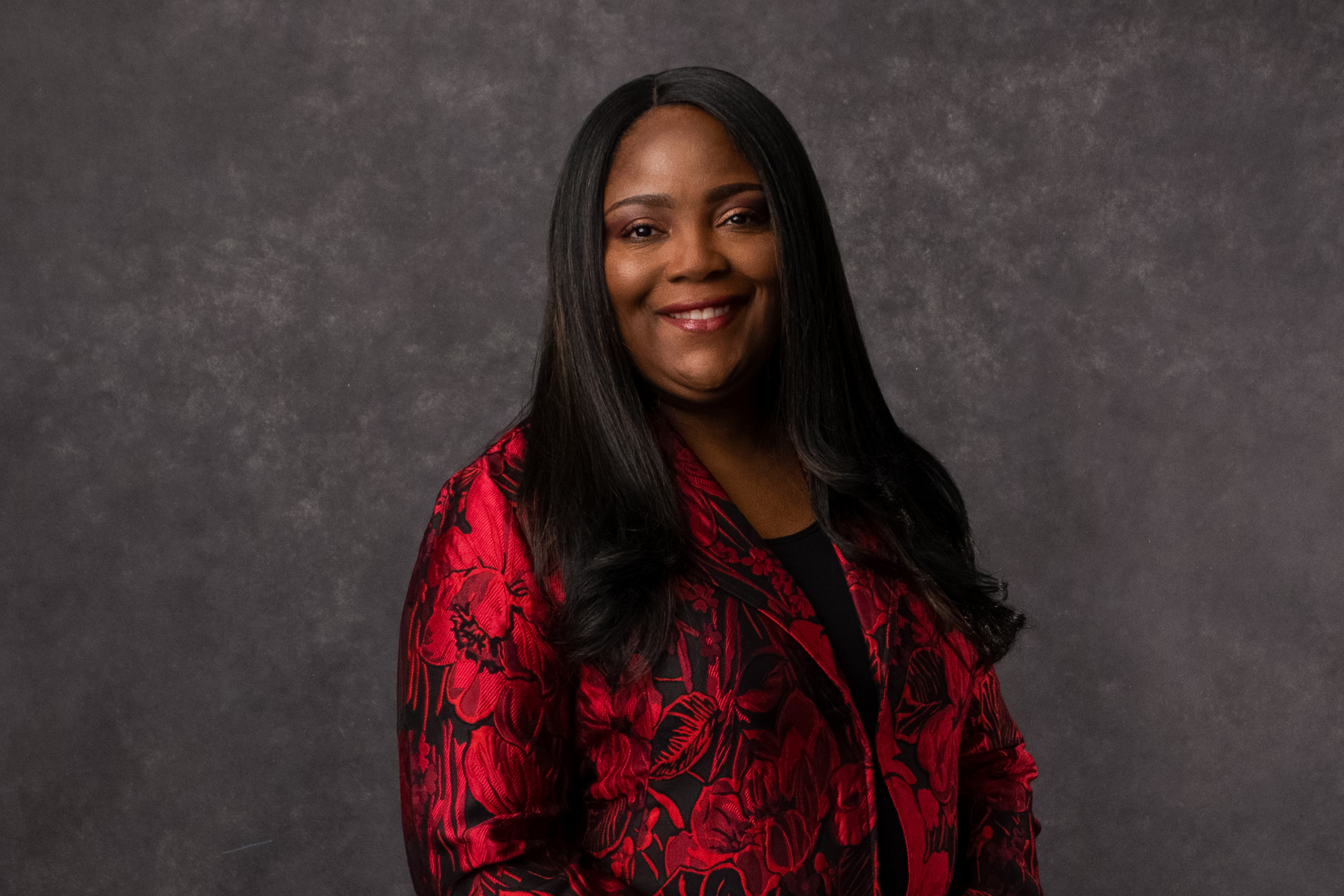
Noelle Arnold
Coordinating academic affairs and advancement teams, the college gave a record $2.1 million in scholarships to students in 2021, increasing by 25% the number of students awarded; targeted funds were set up for students in crisis.
Chief of Staff Nicole Luthy ramped up community engagement, forging deep partnerships with area schools and non-profit agencies. The five leaders routinely show up — attending high school graduations, sitting on boards and strengthening collaboration across campus and with global universities.
“They’re an amazing group of women who have survived and thrived," said Pope-Davis, who describes cabinet meetings as a blend of seriousness, levity and endearment. “They’re a band of sisters, and the only reason I'm part of that discussion is because I grew up with eight sisters myself.”
“But they’re not just women,” he said. “They are qualified women. They have the gravitas, the experience, and they bring an added sense of value to the college and make us better.”
Still, the pushback the leaders encounter comes as no surprise. Women of color remain far more likely to be on the receiving end of disrespectful and “othering” behavior, according to a McKinsey & Company report. Black women leaders experience misogynoir across their careers, as leaders, faculty and professionals, and in their personal lives.
“There are things that have happened to me that I know would never happen to a white man,” said Lori Patton Davis, who in 2019 became the first Black woman chair of the Department of Educational Studies. “I know his competence would never be questioned …. that he will be given the benefit of the doubt in ways that I sometimes have not been in my career.”
Antoinette Miranda worked as a faculty member for 31 years before realizing her dream of becoming a higher education administrator. In 2019, she became associate chair of Educational Studies and is now chair for the Department of Teaching and Learning. The ascent was not easy.
Whether consciously or not, people respond to Black women differently. “You get an email, and you're kind of stunned by it,” she said. “And you think, ‘How should I respond to them?’ A lot of times, the first reaction is, would they respond to a male this way?”
Arnold describes “a sense of exposure,” an awareness that Black women are hyper-scrutinized for signs of failure. She recognizes when her fellow leaders feel the pinch of discrimination.
“One of the things that Black women experience is imposter syndrome,” said Kelly Crawford, now chief administrative officer for the college and senior financial officer since 2018. After years of working up to her position — though lifted by other women along the way — finding her voice was difficult at first.
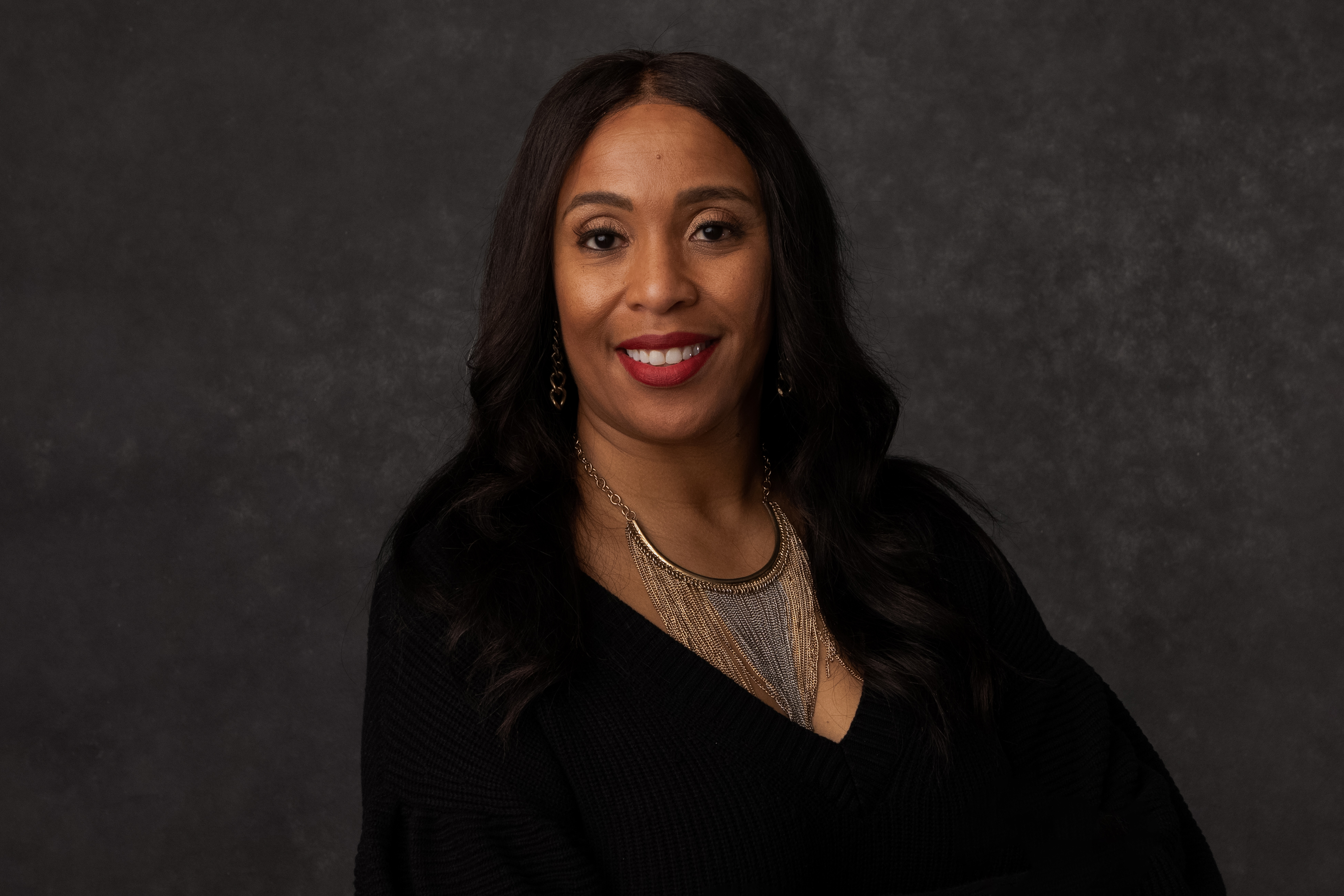
Kelly Crawford
“I got the position, but I still felt like I was out of place,” she recalled. Arnold picked up on her hesitancy and sent Crawford flowers. The card read: You belong in this space.
Now Crawford oversees a major renovation of Campbell Hall, leads meetings with a roomful of male architects, manages the bottom line and helps drive the dean’s vision of college renewal in the new space. She holds the room when talking money matters with faculty.
“She’s so diplomatic in how she engages people,” Luthy said. “She is able to hold her ground as a leader … but also (the building project) is so important that you can't fake it. You have to know what you're doing. It’s that skill of being able to get the information that you need in a way that you don't cede any power.”
If bias rears its head, the five lean into each other. Sometimes encouragement comes in a fleeting look.
“You're in a meeting and you hear something, and you can glance across the room and look at another Black woman, and they get it,” Patton Davis said. “It doesn't require a follow-up conversation; we heard the same thing. It's nice to not have to translate everything.”
“As a Black woman, you can’t let (the scrutiny) get you down. You have to move past it,” Miranda said. “But there's also this part of me that says you have to correct it. Because if you don't, it will continue to undermine you in ways that you didn't even see coming.”
A unique support system
The five leaders know their support system breaks the mold. Each plays her own part. Arnold is the visionary. “She leads with her heart,” Crawford said. “When Noelle walks into the room she speaks to everybody. She makes you laugh and feel comfortable.”
Known for her skill at supporting faculty, Arnold pumps up her admini-sisters, too. After a presentation: “Girl, you just killed it!” When Crawford rocks a new outfit: “Okay, polka dots!”
“I believe a big part of leadership is helping others around you feel supported and succeed, whatever that might be for them,” Arnold said.
Luthy is the silent hand that smooths out sticky situations. Arnold calls her “Olivia Pope, the fixer,” the character from the TV series Scandal who can always read the room. The chief of staff keeps the dean’s cabinet on task and reminds Arnold (via private message) to “fix her face” when she emotes too much in Zoom meetings.
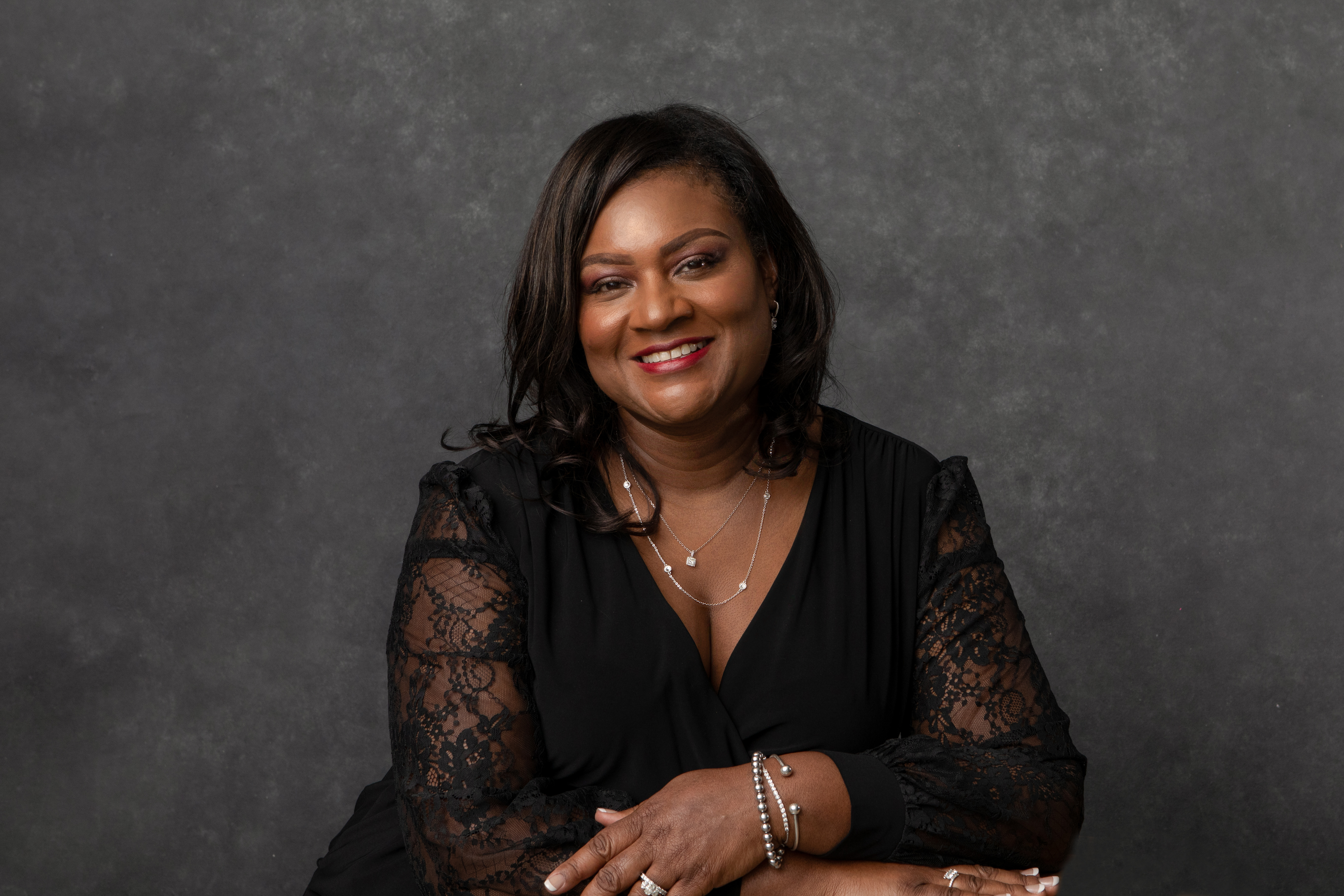
Nicole Luthy
Together or in groups of two or three, the women blow off steam; they formulate responses. They don’t have to worry about being accused of pulling the race card or being angry. They work through problems, laugh often, eat chocolate, get down to the business of executing the vision for the college.
“That type of experience is so rare,” Patton Davis said. “To be in spaces where I'm not the ‘only’ or one of two…. Feeling like I'm part of a group and that I'm supported: That really means a lot. That's the piece that pushes me forward. When I have days where I'm exhausted or I want to give up, I know that I am not alone. And I've not always felt that level of support.”
Achieving firsts, breaking barriers
Among the five, many claim “first” and “only” achievements. Crawford is currently the only Black woman senior financial officer at Ohio State. Arnold was the first Black woman president for the University Council for Educational Administration. Patton Davis was the first Black woman president for the Association for the Study of Higher Education.
They keep breaking barriers and crashing ceilings. In November, Patton Davis gave the acclaimed Brown Lecture for the American Educational Research Association, a first for an Ohio State faculty member. Her admini-sisters were on hand to cheer her, meeting her backstage beforehand to coo over her. (Arnold: “Lo-lo! Your dress! The fabulosity!”)

Lori Patton Davis
The lecture focused on Black women and girls written out of the history of education reform. Patton Davis centered much of her speech on civil rights activist and lawyer Ada Lois Sipuel Fisher, who shaped the movement but was not recognized in her day.
“I look at her story. I look at Linda Brown, who was the plaintiff for Brown v. Board of Education. There is too little attention placed on Black women and girls, and she's an eight-year-old involved in this major case. It's hard for people to locate her and many other Black girls who were interrupting their own childhood for the movement. We don't see them; but we should.”
Given that history, it’s not surprising that Black women are so sharply underrepresented in leadership roles — in any field. Fortune 500 this year was lauded for naming just two Black women among its top CEOs. They were the first.
“Research actually backs this up,” Miranda said. “Women oftentimes think, ‘I don't have 100% of the qualifications, so I'm not going to apply.’ Whereas men may have 50%, and they'll say, ‘I’ll apply and fudge the rest.’”
Miranda questioned her credentials, too, until she became a fellow in the Big Ten Academic Leadership Program and was reminded of her expertise. “It turned out that I had tons of leadership experience over my career, here at OSU and out in organizations, that set me up perfectly for this role.”

Antoinette Miranda
She took on the role of associate chair in Educational Studies in 2019, working with Patton Davis. “I remember thinking, my God, this was made for me. I loved that position,” Miranda said.
Eleven months later, the dean asked her to be interim chair of Teaching and Learning, and then permanent chair in August.
Leading by helping others
Some scholars say adversity shapes Black women into exceptionally good leaders, especially in higher education. They develop an inner force that fosters resilience and bolsters confidence. They recognize the challenges of having too few role models and combating stereotypes. They see people who might otherwise feel invisible.
Patton Davis is resolute about identifying leadership potential among faculty and staff. She works to create pathways — especially for women and people of color — so she won’t have to lead in a vacuum.
Luthy is known as a student advocate. Their stories come to her — one is homeless; another is short on funds for tuition; one has no computer. She marshals her team and calls support agencies. Crawford arranges emergency funds. Someone collects clothing or locates a laptop. They’re compassionate in a purposeful way. They rely on a team of faculty and staff across the college — many of them women and women of color — to make the change happen.
“The behind-the-scenes work on behalf of people – nobody even knows. This is not a glamorous mountain we’re sitting on,” Arnold said. “But if we're not being useful to people or useful to the community, what were we doing?”
That invisible force, born of desire to make higher education better, fuels their response to each other and those they lead.
“A lot of what I've experienced in being a Black woman — I don't want other people to ever feel that way,” said Crawford. “I want people — students, my staff — to feel and understand that they have opportunities and that they're not being judged. That helps people strive to be greater in their roles. It gives them the freedom to be themselves.”


